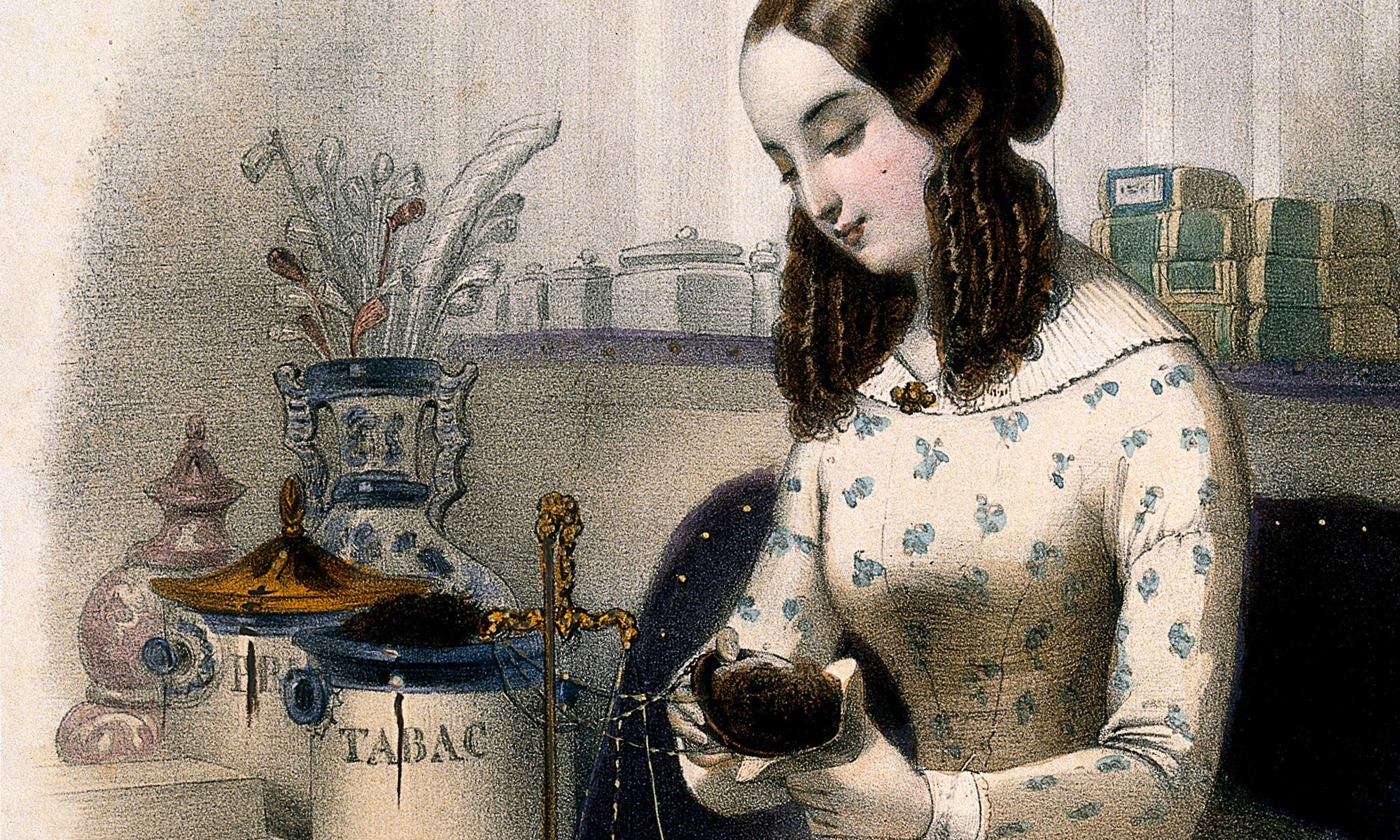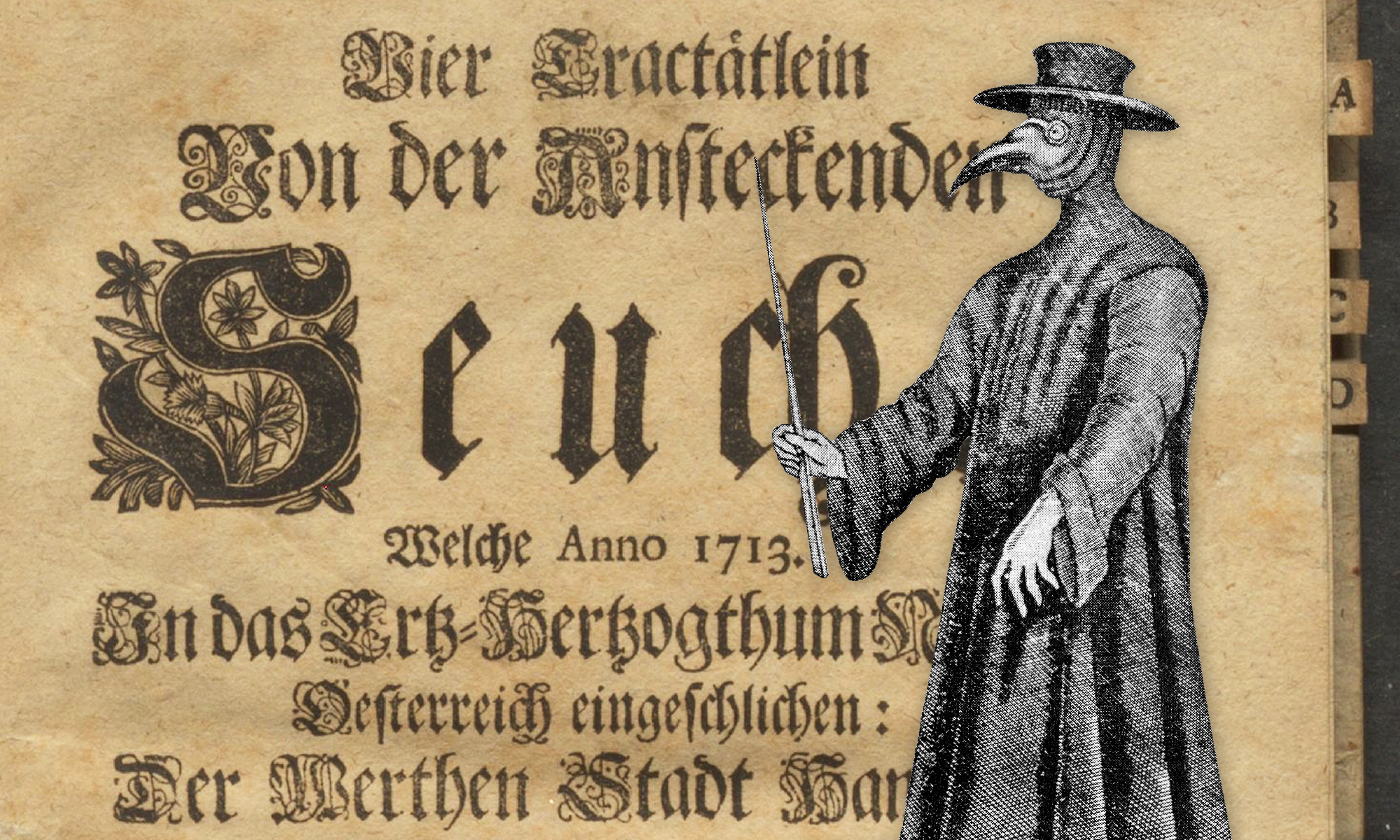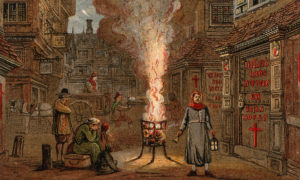In these trying times interest in past pestilences is booming, in particular in plague (and the Spanish flu), not least because there appear to be so many parallels between these diseases and COVID-19: home quarantine, face masks, and the Johns Hopkins mortality statistics website remind us of the red crosses on the front doors of shut-up houses, the ominous bird-like black costume worn by plague doctors, and weekly Bills of Mortality. Despite a horrendous mortality rate – historians estimate between 30 and 60 percent of the population – and the widespread belief that plague epidemics were divine punishment for godlessness and immorality, early modern societies and individuals actively worked to counter the plague (and illness more generally) by drawing on an arsenal of medical, religious, cultural, and political tactics and strategies. But: ‘The past is a foreign country; they do things differently there’. [1] Like us, they too sought the ultimate plague cure as well as ways and means to alleviate suffering and prevent infection. However, conceptual parameters and horizons of practice and association in the seventeenth and eighteenth centuries were quite different to our own.
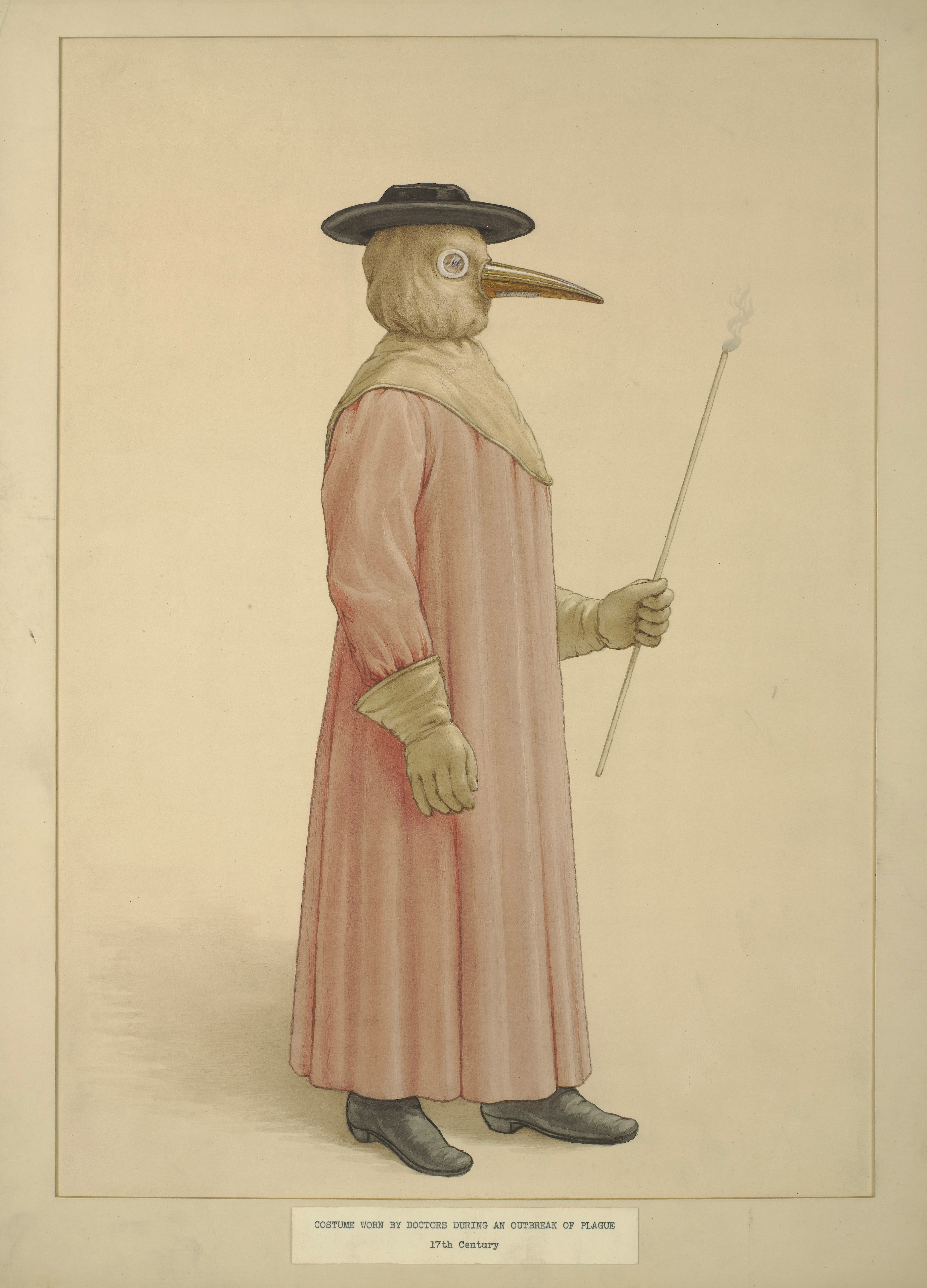
Coffee, tea, sugar, tobacco, chocolate, and opium – new intoxicants with ambiguous uses and meanings in early modern society somewhere on the long continuum between, one the one hand, medicine, nourishment and leisure pursuit and, on the other, ‘good’ and ‘bad’ – provide an opportunity to sound out that otherness. And so I would like here to delve (briefly) into the world of plague medicine with a view to understanding how two of these intoxicants – tobacco and sugar – fitted into early modern medical ideas and practices using medical texts relating to Hamburg, one of the major port cities of northern Europe.
Countering Plague in Hamburg: Public Health and Medical Advice
Hamburgers were not to know it, but the outbreak of ‘feverish illnesses’ in September 1712, which held the city in its thrall until the spring of 1714, was the last time plague would ravage Hamburg. News of severe outbreaks in Poland had led the city’s Senate to take precautions by tightening entry to the city and establishing a Collegium Sanitatis to oversee preventative and social control measures, largely directed at the poor. These included devising a poor ordinance, mandating cleanliness of streets and dwellings, and employing plague physicians and paramedical officials to detect the disease, care for the sick, and supervise the disinfection of houses and public spaces. Soon the city erected plague lazarettes and quarantine houses to facilitate quarantine of the sick and isolation of the healthy members of infected households. Yet as impressive as these institutional public health measures appear to us, studies have shown that people did not rely on institutional public health measures alone. [2] Medical advice, family recipes for preventatives and cures, and religious and social rituals abounded, emanating and coursing from and between learned medicine, healers, religious figures, neighbours, friends, and kin. Despite the incorporation of medical professions, the market for the ultimate preventative or cure, however dubious, was huge and highly inclusive.
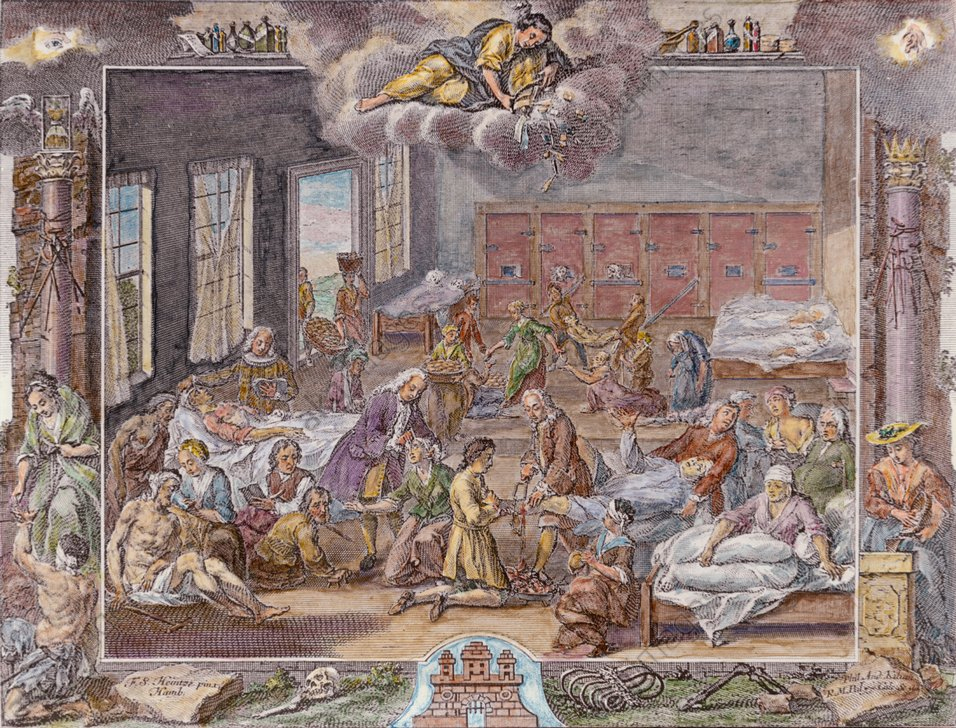
Two works on plague allow us insight into the role of sugar and tobacco from the perspective of university-trained physicians living and working in Hamburg, and to compare developments over a period of roughly 200 years. The first is a plague ordinance from 1597 authored by the Hamburg town physician Johann Bökel (1535–1605), who had worked as a town doctor during the plague epidemic of 1565. [3] An offering to the Hamburg Senate towards the end of his career, it was never officially used. The second, a compendium of four tracts on plague medicine from the 1713 epidemic in Lower Austria and Vienna, was published in January 1714 by the Hamburg physician Dr Gottfried Kirchoff (1662–1732). [4] Kirchhoff treated plague patients during the 1712/13 epidemic and, concerned about some medical recipes circulating in Hamburg, he wished to provide some good advice to the population. He originally wanted to report on the Hamburg contagion but was hindered by his ‘difficult job and other circumstances beyond his control’, so he instead rehashed medical texts from the Austrian and Viennese epidemic that he considered particularly useful. [5]
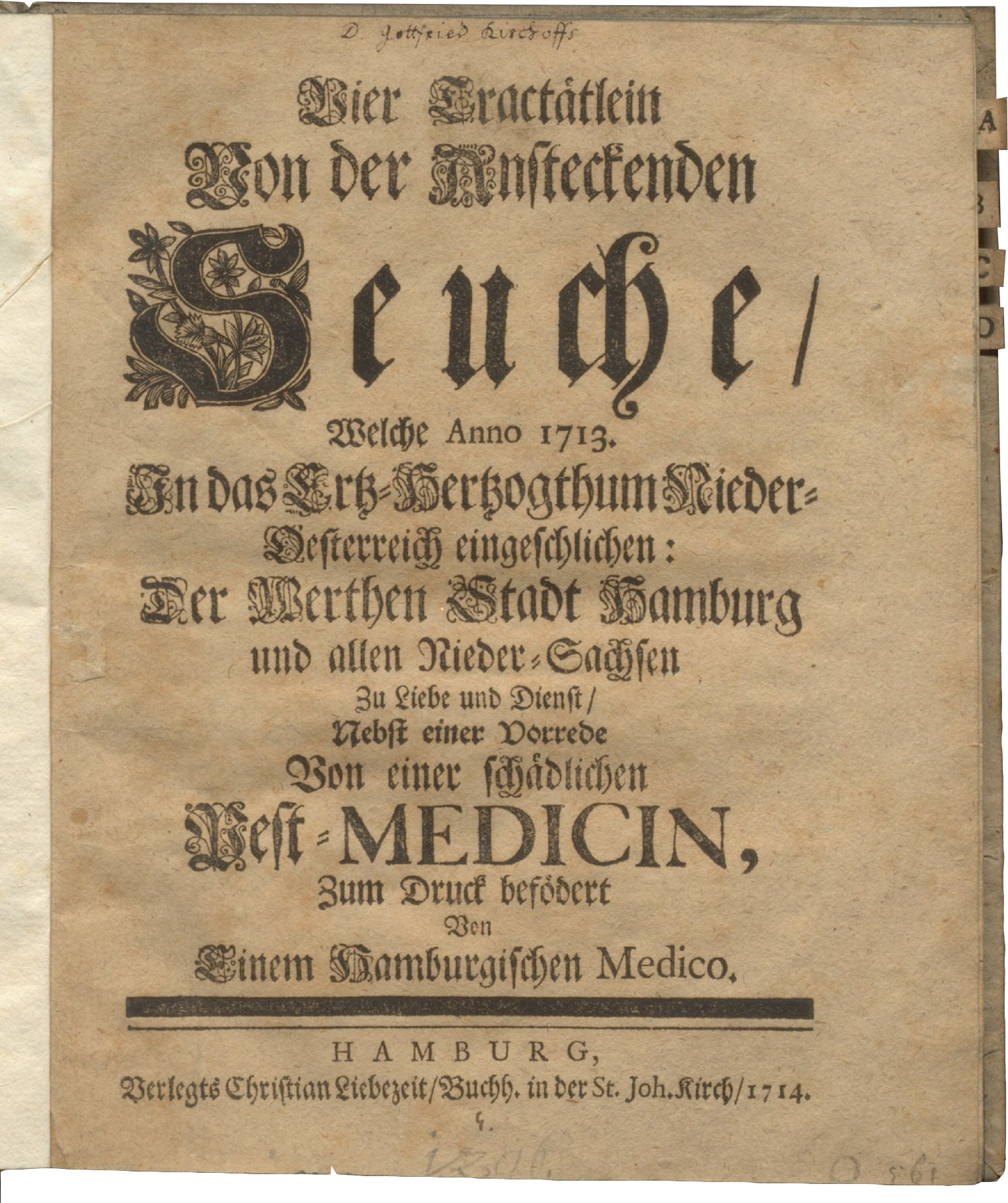
Neither of these vernacular texts were destined for academic debate, but were intended to disseminate highly practical medical information on preventing and curing the plague amongst a broad audience of doctors, governments, and the population more generally. They were also discursive acts of professional assertion in a field of knowledge and practice that was highly contested, and in which the physician was only one of many players (and objects) to whom people entrusted their health. These normative texts thus contained what we today might call ‘best practice’, as defined by learned physicians. And whilst they do not tell us how people really deployed medicines, in order to resonate they had to make sense to contemporaries through common ideas about bodies, substances, disease, and contagion.
A Spoonful of Sugar
Sugar was the earliest of the new intoxicants to gain ubiquity in European markets, arriving early in the twelfth century. Yet it was not until Portuguese colonial production increased in Brazil in the sixteenth century that it became more widely available and affordable. Hamburg quickly assumed a leading role as a centre of sugar trade and production after migrant Dutch sugar merchants and sugar bakers (largely Sephardic Jews) brought sugar refining to the city following the fall of Antwerp in 1585. By the eighteenth century, sugar had become a mainstay of the Hamburg economy.
Despite the fact that sweet foods were generally thought to be disadvantageous in treating feverish illnesses, [6] sugar is found across a handful of recipes for plague remedies, although rarely as the main ingredient. After successful sweating, for example, patients were counselled to consume soups and juices to strengthen the constitution, with one suggestion including sugared lemon leaves. [7] Another recipe to encourage sweating when the fever peaks called for the juice of horse dung, plague vinegar and – to help the patient get the concoction down? – ‘white kitchen sugar according to taste’. [8] Yet another to counter vomiting used rose sugar, diascordium (a compound which may or may not have contained opium), theriac water, cinnamon water, and freshly squeezed lemon juice. [9]

As a preventative or prophylactic sugar was more prevalent but, again, by no means a central ingredient. Confectio Praeservatoria, as their name suggests, contained sugar. These sweet Praeservativa were touted as alternatives to Pilulae Antipestilentiales, in particular for those with weak lungs. [10] According to Bökel’s 1597 ordinance, these ‘little sugar cakes’ – for which there were various recipes for different times of year or specifically for servants – were prepared in pharmacies and were to be taken on an empty stomach before setting out to treat patients afflicted with plague to ward off ‘bad air’. [11] Interestingly, Bökel was at pains to stress that these cakes should be consumed ‘with caution and modesty, also one after another, so that one does not become too accustomed to them’, thus making an association between pleasurable consumption and both intoxication and addiction. [12]
Sugar’s role as infrequent ‘extra’ in plague curatives and preventatives bucks an overall trend towards a greater proliferation of the commodity in everyday consumption over the period. Originally largely used as a spice in small quantities to flavour dishes, over the seventeenth century sugar and its derivatives such as marzipan, biscuits, cakes, as well as extravagant saccharine works of art were becoming more common in European diets. [13] Sugar had also long been a mainstay ingredient in the various medicinal syrups used to treat all manner of ailments. [14] So we can see a divergence between the restrictive use and ideal function of sugar in ‘learned’ plague medicine and its more widespread deployment in society as an expression of luxury, a consuming pleasure, and an essential ingredient in both kitchen and apothecary.
Tobacco
Plague times were smoky times. A longstanding first response to pestilence was the fumigation of all public and private spaces to dry out the air, for the prevailing miasma theory of contagion considered damp, stagnant air to be prone to foulness, the consequence of which was plague. Bökel believed Hamburg, with its cool, wet climate, to be particularly susceptible to infectious diseases, and offered several suggestions to the Hamburg Senate in his 1597 plague ordinance: strategically placed fires on the city walls to ensure the city was permanently shrouded in smoke; fires at the ends of all streets, in public spaces (including marketplaces, townhall, the exchange), and in ‘all dark corners’; ignition of gunpowder; continual burning of a fire in the home; burning of incense in churches; and the use of cakes or candles of incense bought in pharmacies.[15]
When tobacco started to become commonplace in Europe in the early decades of the seventeenth century, it fitted neatly into this conceptual framework of smoke as having drying and cleansing properties, and was commonly touted as a plague prophylactic both for personal use and for the purposes of fumigation. This intersected with other narratives about the health benefits of smoking; travellers to the New World, impressed by the vigour of indigenous Americans, praised it as a wondrous means of preserving the balance of the bodily humours, whilst European medical writers, many who saw a great marketing opportunity, touted tobacco to a lay audience as a panacea for a long list of human ills, including smallpox, syphilis, and cancer.
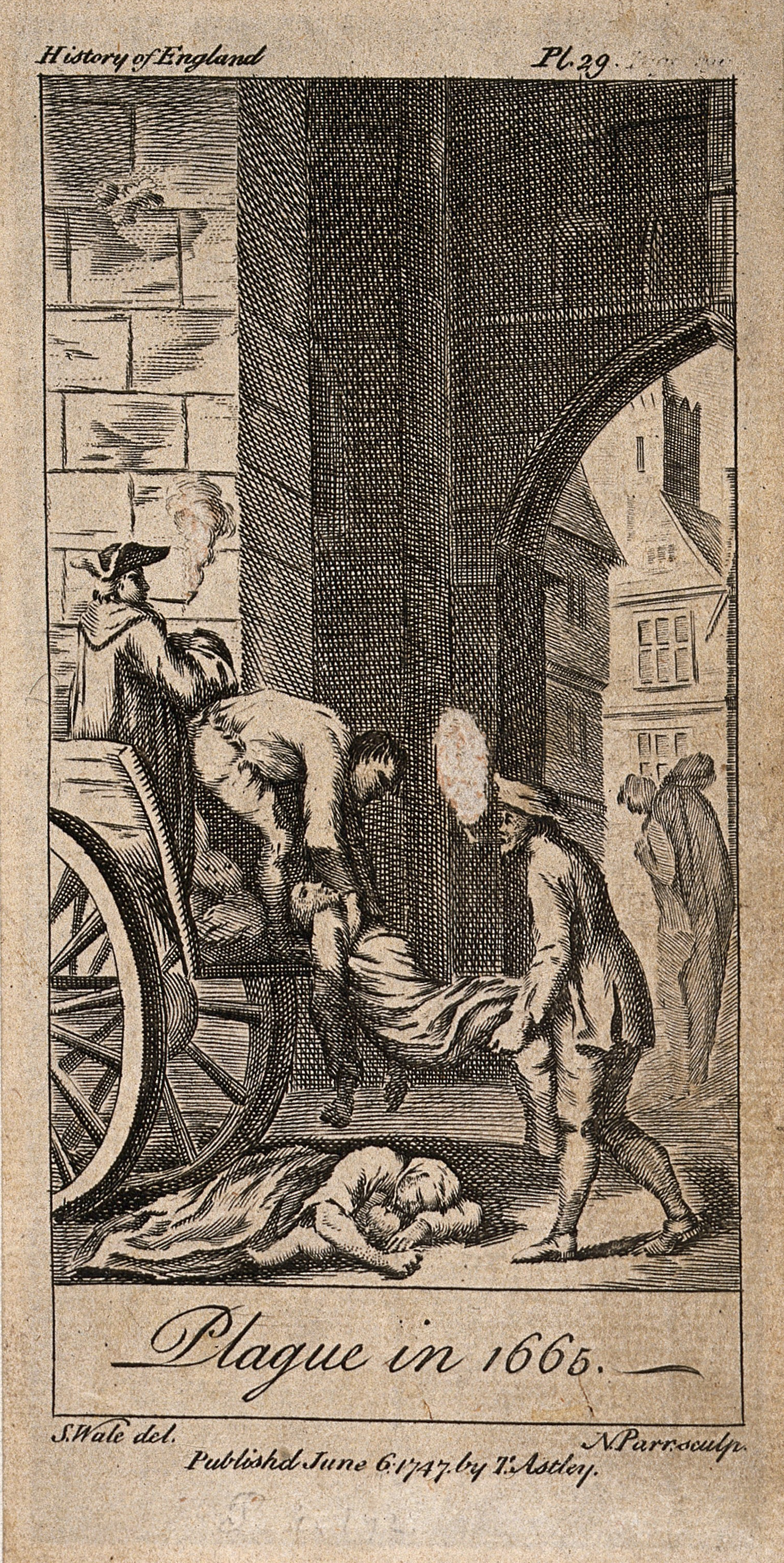
By 1713 tobacco smoking, chewing, and snuffing was firmly entrenched in everyday life across Europe. In general, it was still considered beneficial to health, in particular during plague, for its diuretic, sweat-inducing, and purgative effects. These were well-suited for regulating the body’s humours (in particular for drying out an overproduction of moist, phlegmatic humours), which would prevent illness in the first place: ‘Whoever is accustomed to smoking tobacco, would do no harm, if he continues during these times, or even subjects himself more frequently to it’ is the medical advice from the Austrian epidemic. [16] In the same text, we hear that ‘common smoking tobacco, used in moderation, in both infected areas as in whole armies… has proven highly effective, and by which many plague epidemics the Medici too have preserved and protected themselves’. [17] Those who suffered headache or vomiting when smoking a pipe were encouraged instead to mix one pound of fir-tree resin with half a pound of tobacco leaves, coarsely cut and ground, and to throw the mixture onto the embers of a fire several times a day. [18] Yet tobacco was not only useful in its smoked form. Physicians and surgeons were advised not to swallow their saliva whilst attending those ill with plague, and to keep lovage roots, lemon rind, or Rhine tobacco in their mouth and to spit these out once they left. [19]
Of course, these texts do not tell us whether those consuming tobacco during plague were only doing so for medical reasons. Aside from being addictive, by 1713 pipe smoking was also associated with leisure and masculine sociability, and was a habit enjoyed by many; for these habitual users, it also of course had calming and consoling physical and psychological effects. So, were people also resorting to tobacco because it gave them various forms of relief in catastrophic times? Chewing various roots and lemon rind to ward off the noxious disease of plague, for example, was a practice dating back to the pre-tobacco era, as was the practice of fumigation and incense-burning. [20] In this respect it was likely both, as the increasingly popular social habit of smoking and chewing tobacco became readily assimilated into existing and evolving practices of urban plague prevention.
In plague medicine, then, intoxicants such as tobacco and sugar were largely ascribed a prophylactic rather than a curative function: during contagions downing a sugary cake ‘morsel’, chewing on tobacco leaves, or smoking a pipe were life-preserving practices. Contrasting sugar and tobacco is interesting. The assimilation of pleasurable (and addictive) intoxicants into learned medicine depended upon a particular existing conceptual framework that favoured the inclusion of an intoxicant. Tobacco made a good fit, whereas in the context of a taboo on sweet foods, sugar – an otherwise common medical ingredient that was advancing markedly in the kitchen – was deployed more restrictively.
References
[1] The famous first line of L. P. Hartley’s coming-of-age novel The Go-Between (1953), which has since posed as a metaphor for the study of history.
[2] See, for example, P. Slack ‘Responses to Plague in Early Modern Europe: The Implications of Public Health’, Social Research 55 (1988): 433–53.
[3] J. Bökel (Böckel), Pestordnung der Stadt Hamburg (Hamburg, 1597).
[4] Gottfried Kirchoff, Vier Träctätlein von der ansteckenden Seuche, welche Anno 1713. In das Ertz-Hertzogthum Nieder-Oesterreich eingeschlichen. Der Werthen Stadt Hamburg und allen Nieder-Sachsen zu Liebe und Dienst; Nebst einer Vorrede Von einer schädlichen Pest-Medicin (Hamburg, 1714).
[5] G. Kirchoff, ‘Vorrede’ in Ibid., p. 0 (8 in digital version).
[6] Anon., Anmerckungen über D. Johannis Bökelii, Weyland Physici der Stadt Hamburg Pest-Ordnung (Hamburg, 1633), unpaginated (p. 25 of digital version).
[7] ‘Kurtze Anleitung zur Austilgung Des bedrohlichen Pest=Übels An die Hand gegeben Von einem Pest=Sorger in Wien Im Jahr 1713.’, in Kirchoff, Vier Träctätlein, p. 57.
[8] Ibid., p. 59.
[9] ‘Gantz Kurtzer und Deutlicher Aufsatz, Wie Sich der gemeine Mann und Arme wider die Gegenwärtige in N. Oe. An etlichen Orten, gifftig=und sehr ansteckende Seuch, Wo sonst kein Rath, noch Artzt vorhanden, selbst schützen und heilen kann. Von Ein=auftichtigem Freund derer Armen entworffen’, in Kirchoff, Vier Träctätlein, p. 106.
[10] ‘Kurtze Anleitung’, p. 50.
[11] Bökel, Pestordnung, pp. 61v–62v.
[12] Ibid., p. 62v.
[13] Sidney W. Mintz, Die süße Macht. Kulturgeschichte des Zuckers (Frankfurt Main, 1992), pp. 115–26.
[14] See, for example, W. Wall, ‘Just a Spoonful of Sugar: Syrup and Domesticity in Early Modern England’, Modern Philology 104 (2006): 149–172.
[15] Bökel, Pestordnung, pp. 32v–37r.
[16] ‘Ansteckender Seuche, Welche dieses 1713. Jahr In das Ertz-Hertzogthum Nieder-Oesterreich eingeschlichen, Gründliche und ausführliche Nachricht, sonderbar aus das Land Sammt benöthigten Hülffs-Rettungs- und Verwahrungs-Mitteln. Aus dem Nieder-Oestereichischen Gesundheits-Rath’, in Kirchoff, Vier Träctätlein, p. 30.
[17] Ibid., p. 53.
[18] Ibid.
[19] ‘Gantz Kurtzer und Deutlicher Aufsatz, Wie Sich der gemeine Mann und Arme wider die Gegenwärtige in N. Oe. An etlichen Orten, gifftig=und sehr ansteckende Seuche, Wo sonst kein Rath, noch Artzt vorhanden, selbst schützen und heilen kann. Von Ein=auftichtigem Freund derer Armen entworffen’, in Kirchoff, Vier Träctätlein, p. 75.
[20] Bökel, Pestordnung, pp. 50r–54v.
Further Reading
- K. Boyens, ‘Die Krise in der Krise. Die Maßnahmen Hamburgs während der letzten Pest 1712–1714’, in O. Ulbricht (ed.), Die leidige Seuche (Cologne, 2004), pp. 295–325.
- M. Dinges & T. Schlich, Neue Wege in der Seuchengeschichte? (Stuttgart, 1995).
- A. Menninger, ‘Tabak, Kaffee, Tee und Schokolade in Wissenskulturen der Frühen Neuzeit’, Zeitenblicke 8 (2009), No. 3.
- S. W. Mintz, Sweetness and Power: The Place of Sugar in Modern History (New York, 1996).
- P. Slack, ‘Responses to Plague in Early Modern Europe: The Implications of Public Health’, Social Research 55 (1988): 433–53.
- W. Wall, ‘Just a Spoonful of Sugar: Syrup and Domesticity in Early Modern England’, Modern Philology 104 (2006): 149–72.
- A. Wohlwill, ‘Hamburg während der Pestjahre. 1712–1714’, Jahrbuch der Hamburgischen Wissenschaftlichen Anstalten 10 (1893): 295–406.
